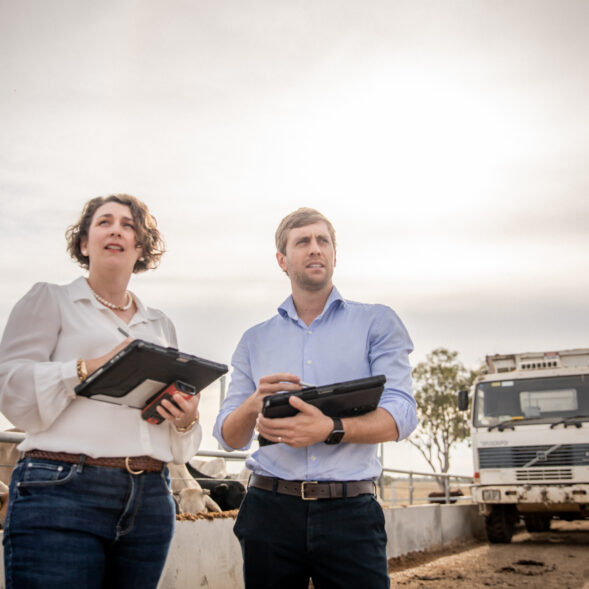National Overview from our Agribusiness Experts
Are all carbon projects’ ACCUS worth the same? The answer may not be as simple as you assume. The market for properties subject to carbon projects is relatively immature at present and as the market matures it is expected that clear market trends may emerge.
However with recent revisions, upcoming amendments to methodologies and ongoing expiry of the various existing and emerging methodologies, it is safe to say that this will continue to be an emerging market for some time to come. Active examples of the changing scene in carbon farming:
- expiry of the Human Induced Regeneration method
- expiry of the New Farm Forestry Plantations
- expiry of the Feeding Nitrates to Beef Cattle method
- proposed amendment of the Reforestation by environmental or Mallee plantings method
- continued uptake of the Plantation Forestry Methodologies
- uptake of Savanna Burning methodology in northern Australia
- development and continued push for soil carbon projects in recent years.
Given this continually shifting landscape, speaking with a variety of industry experts to ensure you receive balanced and independent opinions and perspectives is vital. Obviously, a variety of carbon farming and aggregator companies are at the forefront of putting projects together and are certainly well placed to identify opportunities for generating income from the carbon industry – although any perspectives put forward by industry players should be balanced by industry experts such as our independent property valuers at Herron Todd White.
As per the recently released API Carbon Farming Projects Guidance Paper, there are currently three broad categories of carbon farming or approved methods:
Agricultural methods – Storing carbon in soils; avoiding carbon emissions by minimising methane emissions from piggeries and livestock; avoiding nitrogen emissions from fertiliser use in irrigated cotton;
Vegetation methods – Storing carbon in vegetation through reforestation and revegetation; protecting native forest and vegetation that is at imminent risk of clearing;
Savanna burning methods – Fire management practices that reduce greenhouse gas emissions and enable more carbon to be sequestered in dead organic matter.
That said, the vastly dominant methodology generally adopted in the Mulga lands of south-western Queensland and northern New South Wales has been the now expired Human Induced Regeneration method. As these carbon projects age, the detriment to rural productivity is considered to become greater and this may have an impact on the market’s view of future value or broad market appeal of established projects, particularly in later years if the majority of the ACCUs produced have already been sold.
Given differing motivations of market participants, whether they are a mixed carbon and grazing operator, carbon investor or traditional grazier, the market for property with carbon projects has the potential to develop into a multi-tiered marketplace, with premium or discounted values potentially achieved reflecting specific market participants’ motivations and macro drivers at the time of future sale.
In the southern states, the forestry industry has had considerable headwinds over recent years on the back of a slowdown of new home construction and lack of access to Chinese markets which has coincided with strong growth in the rural property market meaning that non-core forestry assets have come out of rotation and have been sold to developers for conversion back to grazing and arable land. The introduction and continued uptake of the Plantation Forestry Methodologies have changed the metrics on a large proportion of plantation assets with the majority of portfolios going back into rotation under Schedule 3 or Schedule 4 Projects. The removal of the Water Rule has also allowed plantation managers in the northern states the ability to take advantage of the Plantation Forestry Methodology as previously only projects with an annual average rainfall above 600 millimetres were eligible.
The pendulum has actually swung so far in the other direction that a number of major Forestry Companies, such as Midway, have been actively purchasing properties in the Green Triangle for conversion to planation forestry. Whilst we do not believe this will be a long term trend as was experienced circa 10 years ago, it is clear that plantation managers will look at expansion opportunities when available.
The impacts of a Carbon Faming Project have also been broadly identified in the recently released API Carbon Farming Projects Guidance Paper, with the following key considerations identified:
Permanence – consideration of the impact from a change of use of all or part of the property including the permanent (if any) or shorter-term nature of the carbon project and its effect on the subject property.
Restrictions on operations – understanding the effect the carbon project may have on the operation of the existing farming or agricultural use and whether the restrictions to the use, operation or changes of management to the specific project area and to the broader areas of the farm (if any). This may include seasonal restrictions, fire management and any imposed changes under the farm plan or carbon project agreement.
Additional management of land under the carbon project agreement – consideration of the requirements for additional management of the carbon project. This may include additional fencing and maintenance, seasonal changes or restrictions, farming management practices specifically required for the success of the carbon project and any impact (positive or negative) that these changes may have on overall farm management.
Capital investment for the project – consideration of the additional capital expenditure involved with the project planning, sequenced or staged implementation, ongoing management and development, future cost impost and final project completion. Future costs may be the result of ongoing costs to comply with the carbon maintenance obligations over the permanence period for the carbon project (i.e., has the landowner put money aside to meet these maintenance obligations?)
Stage of project and timing – consideration by the valuer as to the current stage of the project as at the date of inspection or valuation, any positive or negative impact on the value at that date and more broadly how this may compare to when the development of the carbon project has reached full completion.
Property sale restrictions – consideration of any property sale restrictions imposed on the landholder under the carbon project agreement and the cost to the landholder of terminating the carbon project and carbon project agreement if the purchaser insists on this situation prior to purchasing the property.
ACCU trading restrictions – consideration of any ACCU marketing or ACCU sale restrictions placed on the landholder under the carbon project agreement and how these impact the ability of the landholder to sell their ACCUs at a price of their choosing to a party of their choosing at a timing of their choosing.
The varied importance to different market participants of these impacts and a variety of other personal motivations – applicable premiums due to the cashflow or discounts associated with the management responsibilities and liabilities associated with established projects – are yet to consistently emerge from sales evidence. At this stage such sales evidence still reflects a variety of perspectives and consequently provides a range of evidence.
Local agents are reporting that strong interest continues to be received for properties that suit potential carbon projects, although this is particularly the case for property suited to vegetation projects where favourable vegetation mapping and land development history is appealing to both graziers and mixed carbon and grazing operators.
Whilst the continued evolution of the carbon market provides opportunities for owners and investors in agribusiness assets in Australia, there remain sectors and asset classes where there are limited applicable methodologies to allow sequestration of carbon/ACCU generation on farm. These revolve predominantly around the dairy industry, horticultural assets and viticultural assets. It is our hope that as the industry matures, additional methodologies will be produced to allow all industry sectors to participate.
Bart Bowen & John Gunthorpe










